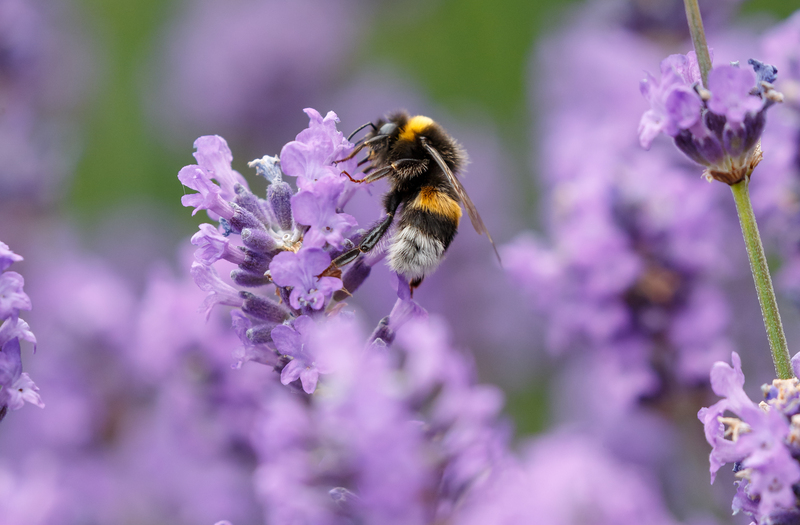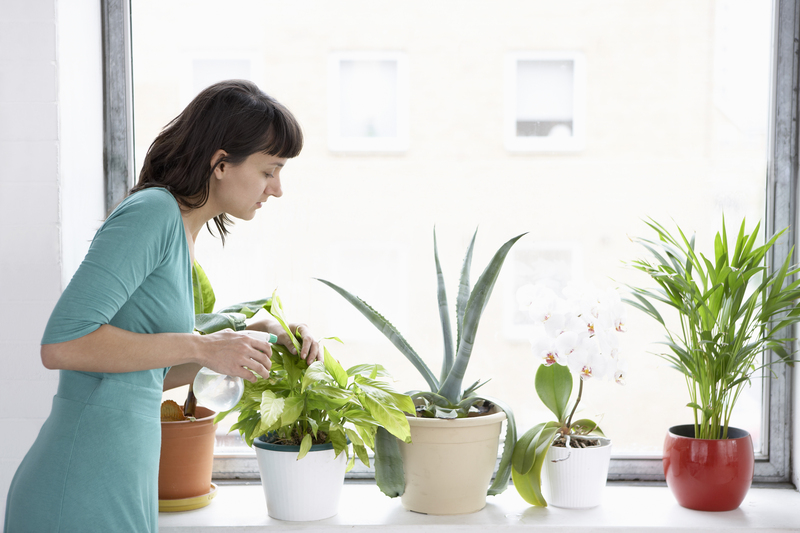Exotic Plants You Can Successfully Cultivate in UK Gardens
Dreaming of a garden that transports you to lush jungles or arid deserts--without ever leaving the comfort of your UK home? Thanks to global plant trade, improved cultivation techniques, and climate changes, introducing exotic plants to British gardens is more popular (and achievable!) than ever. This comprehensive guide explores the best exotic plant varieties that thrive in the UK, how to care for them, and the stunning impact these extraordinary specimens can have on your outdoor space.
Why Choose Exotic Plants for UK Gardens?
- Visual Drama: Exotic plants bring unique shapes, colours, and textures, elevating your garden above the ordinary.
- Eco-Friendly: Well-chosen exotics can attract new wildlife and even out-compete invasive native species in certain scenarios.
- Garden Therapy: The process of nurturing non-native plants can be deeply rewarding and educational.
- Enhanced Property Value: Vibrant, dramatic planting schemes increase both curb appeal and home value.
Let's delve into some of the most astonishing exotic plants you can successfully cultivate in UK gardens, along with expert cultivation tips and design ideas.

Understanding the Challenges of Growing Exotic Plants in the UK
Before choosing your plants, it's important to consider the UK garden climate:
- Temperature: While the UK is largely temperate, winters can be cold and wet, with frosts threatening tender exotics.
- Rainfall: Frequent moisture benefits some exotics (think ferns), but others (like succulents) need well-drained soil.
- Sunlight: Mild summers mean sun-lovers may need positioning in the garden's brightest spots.
Choose wisely: Opt for frost-hardy or easily overwintered species, and adapt your garden's microclimate with protection, mulching, and clever siting.
Top Exotic Plants for British Gardens
1. Trachycarpus fortunei (Windmill Palm)
The windmill palm is a staple for tropical garden designs in the UK. Hardy to -15?C, it effortlessly survives British winters and can eventually reach heights of six meters, offering a true palm tree silhouette.
- Sun/Shade: Thrives in sun or partial shade.
- Soil: Well-drained and fertile.
- Winter Care: Minimal; older leaves may be removed in spring.
2. Musa basjoo (Japanese Hardy Banana)
Want bold, tropical foliage all summer long? Musa basjoo produces large, lush banana leaves, and, with winter mulching, will regrow year after year--even after cold snaps.
- Height: Rapid grower, up to 4m in sheltered sites.
- Moisture: Enjoys regular watering in dry months.
- Winter: Cut back after frosts and insulate roots.
3. Tetrapanax papyrifer (Rice Paper Plant)
Boasting dinner-plate-sized, deeply lobed leaves, tetrapanax creates an instant jungle effect and copes surprisingly well with the UK's climate.
- Grows up to 5m with a wide spread, stunning as a specimen or backdrop.
- Tolerates most soils; protect young growth from spring frost.
4. Dicksonia antarctica (Tree Fern)
Tree ferns bring prehistoric drama to shady corners. The rough trunk and fine fronds appear ancient, yet with some protection, they happily survive sub-zero temperatures.
- Prefers shade or dappled sun--perfect for north-facing borders.
- Keep the crown moist at all times; mulch heavily in winter.
5. Phormium tenax (New Zealand Flax)
The Phormium genus is ideal for structure and colour. Its sword-like foliage (green, purple, bronze, pink, or variegated) adds year-round interest and tolerates coastal winds and urban air pollution.
- Excellent in containers or borders--requires little maintenance.
- Copes with drought once established.
6. Eucalyptus gunnii (Cider Gum)
This Australian native is valued for both its aromatic silvery leaves and rapid growth. Eucalyptus gunnii is hardy and makes a splendid feature tree--or prune for a bushier shrub.
- Fast-growing--plant well away from buildings.
- Loves sun and well-drained soil.
7. Cordyline australis (Cabbage Palm)
Cordylines conjure up a Mediterranean vibe with their spiky leaves and elegant trunks. Hardy to about -8?C, they flourish across much of the UK with minimal fuss.
- Available in green, red, and variegated types.
- Protect young plants with fleece if frost is severe.
8. Yucca filamentosa
Yucca filamentosa offers architectural interest with stiff, sword-shaped leaves and bold summer flower spikes. Hardy, drought resistant, and easy to keep in check.
- Excellent for gravel gardens and containers.
- Needs good drainage to avoid root rot.
9. Canna lilies
Canna lilies infuse borders with flamboyant blooms in reds, oranges, and yellows atop lush, banana-style foliage. Cannas thrive in full sun and moist, well-fed soil.
- Lift rhizomes and store frost-free over winter in colder areas.
- Perfect for combining with dahlias and ornamental grasses.
10. Agapanthus (African Lily)
Masses of blue or white blooms in high summer make agapanthus a coveted exotic for containers or borders. Choose hardy varieties for the UK.
- Well-drained soil and full sun = prolific flowering.
- Mulch in winter or move containers indoors.
Cultivating Exotic Plants: Practical Tips for UK Success
1. Microclimate and Site Selection
Urban gardens, sheltered walls, and south or west-facing aspects can offer warmth that benefits exotics. Use fencing, hedging, or screens to protect from wind and frost.
2. Soil Preparation and Drainage
- Add organic matter to improve fertility and structure.
- For desert plants, incorporate grit or sand for drainage.
3. Watering and Feeding
- Regular watering is crucial for lush exotics, especially in pots.
- Feed in spring and summer with slow-release or liquid fertilisers.
4. Frost and Winter Protection
- Wrap trunks with horticultural fleece or straw (e.g., bananas, tree ferns).
- Mulch thickly to insulate roots.
- Move pots to sheltered spots or indoors.
5. Pruning and Maintenance
- Remove damaged or dead growth to prevent disease and encourage strong regrowth in spring.
- Divide crowded clumps of rhizomatic species (e.g., cannas, agapanthus) for healthier plants and more blooms.
Design Ideas: Creating an Exotic Oasis in Your UK Garden
1. Tropical Border
- Layer lush foliage: combine bananas, cannas, and tree ferns for height and jungle atmosphere.
- Underplant with shade-loving exotics like hostas and heucheras.
2. Mediterranean Courtyard
- Use phormiums, yuccas, and agapanthus in terracotta pots or raised beds.
- Add gravel, olive trees, and drought-loving herbs for an authentic feel.
3. Architectural Focal Points
- Highlight tall palms, cordylines, or giant gunnera beside water features or patios.
- Mix with contrasting forms: spiky yucca alongside soft ornamental grasses.
4. Container Jungle
- Group exotic plants in large pots for visual variety and easy winter protection.
- Experiment with bold-leafed and vibrantly coloured selections.
5. Wildlife Attraction
- Choose blooming exotics (e.g., abutilon, passionflower, cestrum) to attract exotic insects and butterflies.
- Use nectar-rich plants and sheltered foliage for habitat.

Frequently Asked Questions About Exotic Plants in UK Gardens
Can tropical and exotic plants survive UK winters?
Many exotic plants can survive outdoors in the UK with the right protection, especially those rated as "hardy" (such as Trachycarpus and Dicksonia). Tender perennials can be overwintered indoors or mulched heavily.
Do exotic plants need more maintenance?
Some exotic plants for UK gardens require special care, especially regarding winter protection and summer watering. However, many (like yucca, phormium, and cordyline) are surprisingly low-maintenance once established.
Will exotic species be invasive?
Always research your plant choices. Some exotics can spread vigorously (e.g., tetrapanax or gunnera). Regular pruning or root barrier systems can contain their growth.
Can I grow exotic plants from seed?
Absolutely! Many exotics are available as seed, which allows you to grow them from scratch and acclimate them to your microclimate. Always follow germination guides and start seeds indoors for a head start.
Conclusion: Transform Your UK Garden Into an Exotic Paradise
With a careful selection of resilient, exciting exotic plant species and a bit of creative gardening, you can easily achieve a dramatic, lush look that rivals gardens in warmer climes. Whether you wish to evoke a sun-drenched Mediterranean terrace, a vibrant jungle escape, or a desert sanctuary, there's a world of exotic planting possibilities right at your fingertips.
- Start small: Choose a few hardy exotics first and experiment with combinations.
- Embrace protection: Don't hesitate to invest in fleece, mulch, and shelters for your tender specimens.
- Enjoy the journey: Cultivating exotic plants is about learning, experimenting, and enjoying the rewards of a unique, unforgettable garden landscape.
With careful selection, preparation, and a dash of creativity, even the most exotic plants can thrive in UK gardens--bringing bold beauty and lasting fascination to your little corner of the world.
Ready to transform your outdoor space? Dig in, and let your imagination take root!